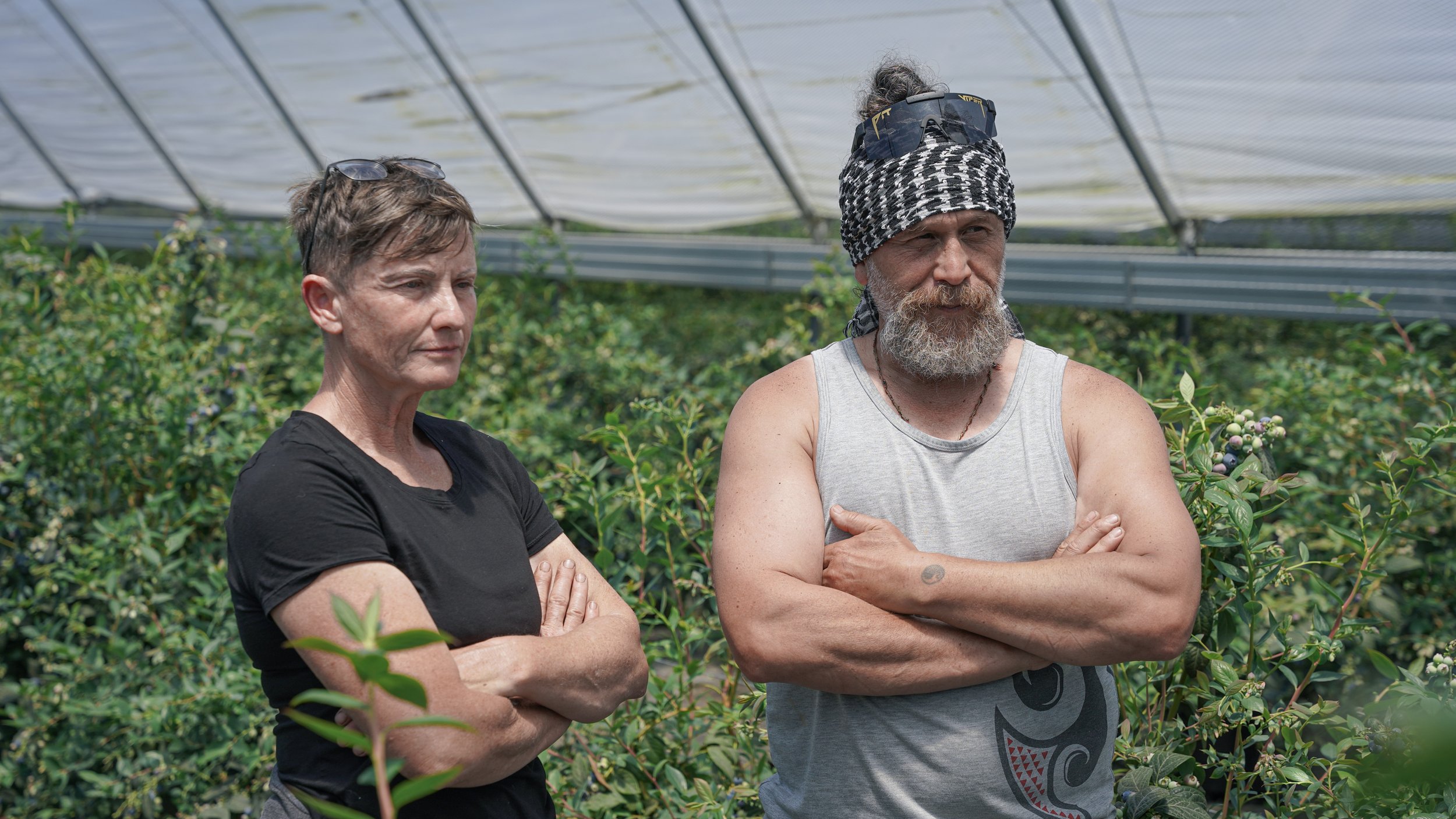Berry Farm on track for record harvest
The Turuturu and Pātea Berry Farms are expected to break new harvest records this season, credit to the hard yards of husband and wife, Darren and Tracy and their team.
Operating for three years, the Berry Farms have seen their fair share of challenges including those that are related to weather, geographic location and being the only Berry Farm in the country located on the West Coast.
The many factors that go into running the farm
“There are so many factors that go into growing a blueberry that goes on top of our pavlova at christmas. One of the biggest challenges we witness in this region is the wind. Our tunnels channel gusts straight through them if the wind hits them in the right direction. We’ve had to alter the design of the tunnels to withstand the gusts,” said Darren.
“Temperature is also a challenge, with the roof acting as a greenhouse that can easily get over 40-degrees in summer. We ensure that we look after the wellbeing of our crews, pulling them out when it reaches 35-degrees. Not only is it for their wellbeing, but also to ensure that the berry does not become damaged when it’s picked.
“We start our picking just after 6AM every morning, and wrap around 1PM before it gets too hot.
Employing our own: The berry farms have been able to employ our own uri so that they can earn during the season and ahead of the busy Christmas period.
“Our location is also another challenge that we face being so far away from where the berries get transported to.
In the middle of a season, our driver will do three return trips to Te Puna near Tauranga to transport our berries.
“A trip can take around 13-hours return and is done through the night. It’s a big ask, but we’re thankful to have a dedicated driver to get our product to the right place before it is sent out to the supermarket shelves.”
The Ruanui owned and operated berry farms are the only farms located on the West Coast, so often it is a case of seeing what grows well and what does not.
“Like all fruit and vegetables, the berries grow according to the conditions. So what tends to grow in Australia or the East Coast doesn’t neccesarily grow well here in the Taranaki. We’ve got no real example to follow. So it’s been a process of trial and error, we are constantly trying out new strains to see what works best for us.”
Ready for market - some of the fruit off a harvest one morning. Berries are put through a process so that they are weighed and then stored, ready for the berry to make the 7-hour journey to Te Puna, near Tauranga.
Focusing on the positives
Despite the curve balls, the duo have been focused on the positives that come with putting in the hard yards.
“It’s special being the first berry farm on the West Coast. Having to work things out and endure the horticultural challenges has been part of the experience. We started with no expertise in this field but are loving being able to learn on this journey and engage with the wider network of berry growers.
“We are also self-sustaining with our water supply, capturing and storing it year around. We can store up to 9-million litres of water which gets used and ensures we don’t have to access and pay for public water supply.”
The backbone behind the machine: Tracy and Darren Ngarewa are the backbone behind the machine. Each responsible for a berry farm each as well as the operations, and day-to-day management.
Flourishing and breaking records
The berry farm is on track to harvesting 35-tonnes of berries this season, a new record which is likely to exceed 40-tonnes next year. The success is built on a by Ruanui for Ruanui business model that is helping the farms flourish.
“We’re going to have to get a bigger truck next season to transport our berries over to Tauranga based on projections. Both Turuturu and Pātea are looking at continuing to break records which is a hugely positive thing for the iwi.”
Reinvesting and employing our own uri
“Our farms have also been able to provide uri with jobs through the harvesting season but also throughout the year through maintenance. It’s a full circle moment, iwi investment into the establishment of the farms, employment of our own and then ultimately profits going back to iwi,” said Darren.
“The ma’i is pretty physical, you’re on your feet most of the day manually picking berries. Some of our most effective pickers can harvest 50-kilos of berries in six-hours. The more picked the more they earn, so there is real potential to take home a few hundred dollars at the end of every day,” said Darren.
The season concludes in mid-December where uri were invited to come along and pick the remaining fruit




